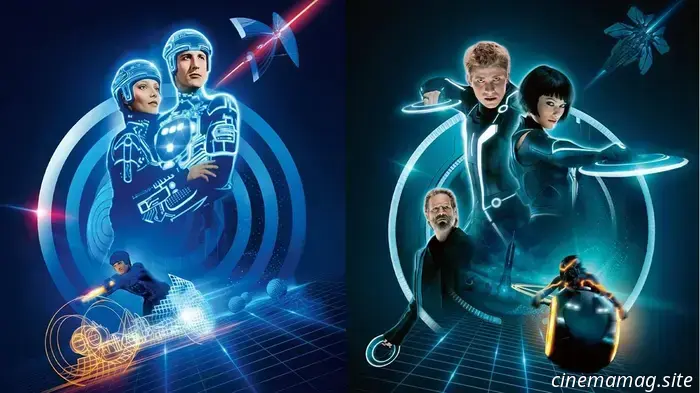
Lights, Camera, Learn: The Impact of Interactive Learning Tools on the Future of Filmmaking Education
Cinematography serves as the essence of filmmaking, merging creativity with technical accuracy to craft engaging visual narratives. By 2025, this domain is experiencing swift changes, driven by leading-edge technologies that are altering how filmmakers capture and construct images.
For students or enthusiasts readying for a practice test in filmmaking basics, grasping contemporary cinematography technology is crucial, offering perspectives on the tools and methods that are shaping cinema's future.
The Emergence of AI in Cinematography
Artificial intelligence has started to play a key role in contemporary filmmaking. AI-powered tools can assist cinematographers in various ways:
- Scene Composition: AI algorithms can evaluate a scene and recommend ideal camera angles, framing, and lighting to ensure a cinematic balance.
- Automated Camera Movement: Drones and robotic setups now employ AI to track subjects and maintain smooth movements, minimizing the need for multiple takes.
- Post-Production Aid: AI tools can improve color grading, stabilize footage, and help match lighting across shots for continuity.
For example, AI-assisted cameras can recognize facial expressions, motion, and lighting conditions in real-time, allowing directors to concentrate more on emotional storytelling rather than technical adjustments.
Advancements in High-Resolution Cameras and Sensors
Cinematographers in 2025 are reaping the benefits of significantly enhanced camera technology, such as ultra-high-resolution sensors and advanced color science. These cameras provide:
- 8K and Beyond: Higher resolutions allow filmmakers to capture extraordinary detail, facilitating flexible post-production cropping and digital zooms without losing quality.
- Improved Dynamic Range: Modern sensors can capture a wider range of light, increasing realism and depth in visuals.
- Superior Low-Light Performance: New sensors provide stunning night or low-light scenes without excessive noise, broadening creative opportunities.
These innovations enable filmmakers to create cinematic visuals that were once exclusive to large-budget productions. Independent filmmakers, in particular, find this technology empowering, making professional-quality cinematography more accessible than ever.
Virtual Production and LED Volume Stages
A major technological breakthrough in contemporary filmmaking is virtual production, especially the adoption of LED volume stages. These environments merge large LED screens with real-time 3D rendering, allowing actors and cameras to engage with fully immersive digital settings.
Key benefits include:
- In-Camera Visual Effects: CGI environments are generated live on the LED walls, reducing the need for post-production compositing.
- Realistic Lighting: The LED panels naturally light actors and sets, maintaining consistent reflections and shadows.
- Instant Scene Changes: Directors can seamlessly switch environments, saving time and reducing production costs.
Enhance Your Filmmaking Skills with Voice Acting Training
Filmmakers aiming to broaden their skill set, especially in post-production and content creation, will find voice acting and audio editing vital. Resources like the YT Voice Over Practice Test – Audios, Video Editing, and Shorts Script Voice Acting Training 2025 provide practical experience in recording, editing, and syncing audio for films, shorts, and digital projects. This training deepens your understanding of sound design and enhances storytelling by enabling the creation of professional-quality voiceovers.
Drones and Aerial Cinematography
Aerial shots have long added a cinematic touch to films, but advancements in drone technology are transforming how these shots are captured. Today's drones include:
- Stabilization Gimbals: Ensuring ultra-smooth motion, even in windy conditions.
- AI Flight Paths: Automated tracking of subjects or routes to capture dynamic sequences.
- Compact, High-Resolution Cameras: Lightweight drones capable of recording 8K or higher quality footage.
These advancements enable filmmakers to achieve spectacular aerial shots that were once only possible with helicopters or cranes, opening up new creative avenues and lowering production costs.
The Impact of Computational Cinematography
Computational cinematography is changing how images are captured by utilizing software to enhance or manipulate footage during shooting. Features include:
- Depth Mapping: Cameras can gather spatial information allowing for adjustments in focus and framing during post-production.
- Real-Time Color Grading: Color palettes can be applied while filming, providing directors with immediate visual feedback.
- HDR Integration: Capturing high dynamic range images guarantees cinematic quality with natural highlights and shadows.
This technology streamlines workflows while enhancing artistic control, effectively bridging the gap between cinematography and post-production.
Innovations in Lighting
Lighting is a crucial element of cinematography, and modern technology has brought forth tools that are smarter and more adaptable:
- LED Lighting with Adjustable Color Temperature: Providing accurate control over mood and tone.
- Portable Smart Lights: Compact, battery-operated lights that can be controlled remotely.
- Light-Sculpting Tools: Devices that creatively shape and diffuse light in various ways.
These innovations provide cinematographers with enhanced flexibility on set, allowing for creative exploration with reduced setup time.
Challenges and Considerations
While technology presents exciting possibilities, cinematographers must also contend with challenges:
- Overreliance on Technology: Excessive dependence can sometimes overshadow storytelling.
-
Other articles
 Behind the Curtains at Pinco Casino: What Drives Game Popularity Among Gamers - MovieMaker Magazine
Have you ever considered what actually turns a game into a sensation in the vibrant realm of online casinos? It goes beyond merely impressive graphics or an appealing title. At
Behind the Curtains at Pinco Casino: What Drives Game Popularity Among Gamers - MovieMaker Magazine
Have you ever considered what actually turns a game into a sensation in the vibrant realm of online casinos? It goes beyond merely impressive graphics or an appealing title. At
-Movie-Review.jpg) Swiped (2025) - Film Review
Swiped, 2025. Directed by Rachel Lee Goldenberg. Featuring Lily James, Ben Schnetzer, Myha’la, Jackson White, Dan Stevens, Ian Colletti, Mary Neely, Ana Yi Puig, Aidan Laprete, Pedro Correa, Coral Peña, Pierson Fodé, Hannah Marks, Olivia Rose Keegan, Hunter Sansone, Larken Woodward, Gabe Kessler, Dermot Mulroney, and Clea DuVall. SYNOPSIS: Based on the narrative of Whitney […]
Swiped (2025) - Film Review
Swiped, 2025. Directed by Rachel Lee Goldenberg. Featuring Lily James, Ben Schnetzer, Myha’la, Jackson White, Dan Stevens, Ian Colletti, Mary Neely, Ana Yi Puig, Aidan Laprete, Pedro Correa, Coral Peña, Pierson Fodé, Hannah Marks, Olivia Rose Keegan, Hunter Sansone, Larken Woodward, Gabe Kessler, Dermot Mulroney, and Clea DuVall. SYNOPSIS: Based on the narrative of Whitney […]
 The influencer thriller Killer Content has released both a trailer and a poster.
In anticipation of its digital release next week, a trailer and poster have been unveiled online for Chris St. Croix's forthcoming thriller, Killer Content. The movie follows an unstable fan who takes her favorite social media influencer hostage in hopes of attaining her own internet fame, oblivious to the fact that her idol harbors a dark and [...]
The influencer thriller Killer Content has released both a trailer and a poster.
In anticipation of its digital release next week, a trailer and poster have been unveiled online for Chris St. Croix's forthcoming thriller, Killer Content. The movie follows an unstable fan who takes her favorite social media influencer hostage in hopes of attaining her own internet fame, oblivious to the fact that her idol harbors a dark and [...]
 Chicken Run: Eggstraction will be available during Steam Next Fest with a limited-time demo.
Outright Games and Aardman have revealed that their forthcoming game, Chicken Run: Eggstraction, will be showcased during Steam Next Fest this fall. From October 13th to 20th, players will have the opportunity to experience a new, limited-time demo on Steam, tackling puzzles and causing some chaos. This comes ahead of the game’s release on [...]
Chicken Run: Eggstraction will be available during Steam Next Fest with a limited-time demo.
Outright Games and Aardman have revealed that their forthcoming game, Chicken Run: Eggstraction, will be showcased during Steam Next Fest this fall. From October 13th to 20th, players will have the opportunity to experience a new, limited-time demo on Steam, tackling puzzles and causing some chaos. This comes ahead of the game’s release on [...]
 TRON and TRON: Legacy will be released in 4K Ultra HD prior to the arrival of TRON: Ares.
In anticipation of the theatrical debut of TRON: Ares next month, it has been revealed that the initial two films in Disney's sci-fi adventure series, TRON and TRON: Legacy, will be released in 4K Ultra HD on September 29th. Take a look at the cover art and further information below... TRON has been digitally scanned and meticulously restored by The […]
TRON and TRON: Legacy will be released in 4K Ultra HD prior to the arrival of TRON: Ares.
In anticipation of the theatrical debut of TRON: Ares next month, it has been revealed that the initial two films in Disney's sci-fi adventure series, TRON and TRON: Legacy, will be released in 4K Ultra HD on September 29th. Take a look at the cover art and further information below... TRON has been digitally scanned and meticulously restored by The […]
 Where to Land Review: Hal Hartley makes a comeback with a captivating and intriguing drama.
"I've finished with the superhero role." Muriel (Kim Taff), an international film star closely associated with her cosmic character in a highly successful TV series, has hit her creative limits. She admits this to her boyfriend Joe Fulton (Bill Sage), a former romantic comedy director who is undergoing his own journey of self-reflection.
Where to Land Review: Hal Hartley makes a comeback with a captivating and intriguing drama.
"I've finished with the superhero role." Muriel (Kim Taff), an international film star closely associated with her cosmic character in a highly successful TV series, has hit her creative limits. She admits this to her boyfriend Joe Fulton (Bill Sage), a former romantic comedy director who is undergoing his own journey of self-reflection.
Lights, Camera, Learn: The Impact of Interactive Learning Tools on the Future of Filmmaking Education
Explore the ways in which interactive learning tools are revolutionizing filmmaking education, aiding aspiring filmmakers in honing their skills and keeping them competitive in the industry.
